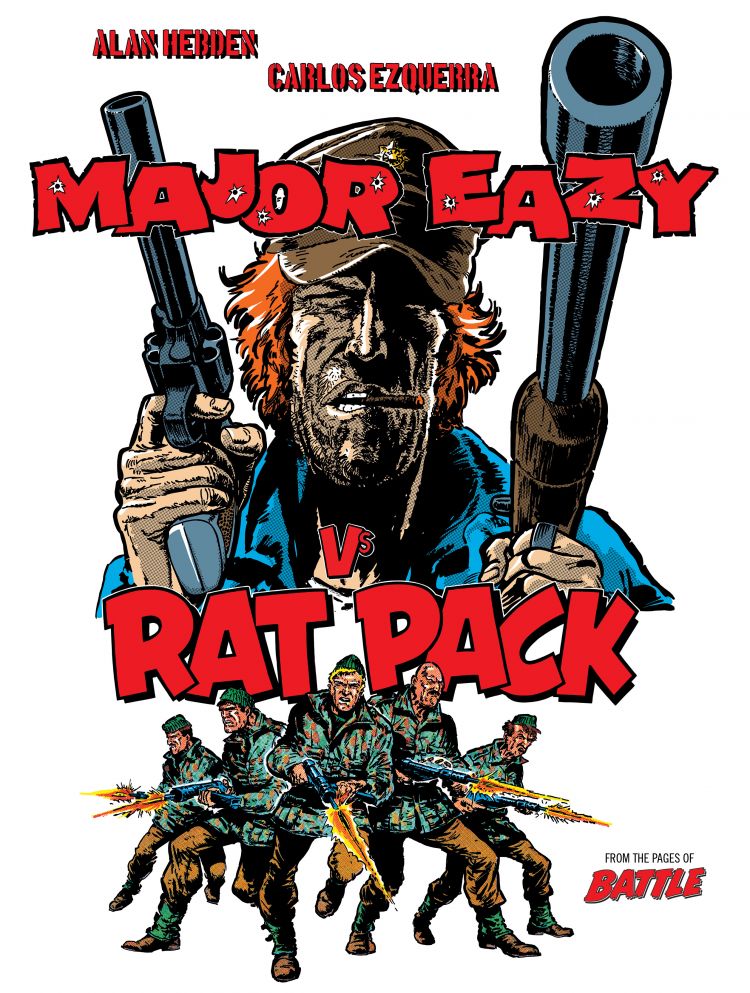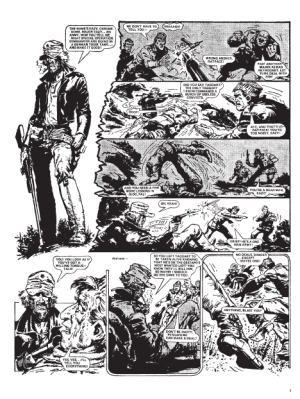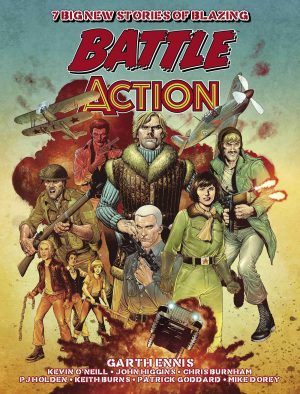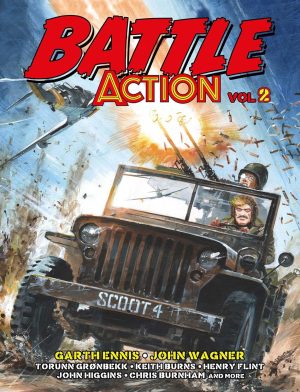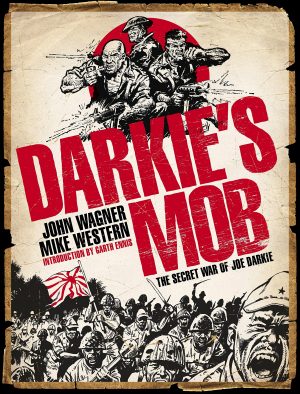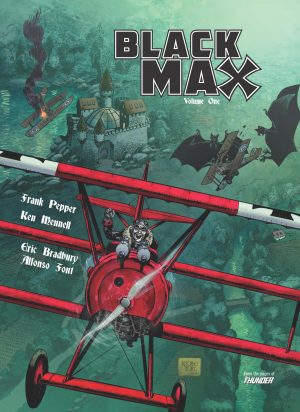Review by Ian Keogh
This slim hardcover reprint of the time two of Battle’s leading features crossed paths during World War II was never widely circulated, but as of writing is still available from The Treasury of British Comics webpage.
Artist Carlos Ezquerra was headhunted to draw the adventures of the Rat Pack in 1975, Battle’s editors Pat Mills and John Wagner feeling his rough and gritty style was ideal for a feature about a fighting squad of four convicts. Ezquerra was also ideal for the laconic Major Eazy, who fights for his country, but hates regulations. In both cases Ezquerra showed the grubby reality of wartime locations, and the life and detail he packs into three page episodes is astonishing.
Alan Hebden wrote both features, ensuring the characters were unconventional, but supremely competent risk takers. In 1977 the idea of a crossover was extremely rare in British comics, yet he forged ahead not with a single serialised tale, but a whole bunch of missions, generally in two parts. They’re still very readable partially because there’s a reason for the ‘vs.’ in the title. Instead of becoming buddies, Hebden highlights the natural antipathies between the Rat Pack and Eazy. He doesn’t like them, and they certainly don’t like him, yet are no match for him in any kind of fair fight. Beyond the threat of the Nazis, there’s suspense about their attempting to betray him. Hebden’s war stories always rocket along, and this is no different, with the location changing every chapter and the situations incredible. Even the cynical Rat Pack are impressed at Eazy’s capabilities.
It’s high octane action throughout, but hits a peak with the two chapters of Turk having to impersonate a German general to break into a secure vault, and the subsequent escape.
The collection ends with two further war stories drawn by Ezquerra, both standalones without any of Battle’s marquee characters. Hebden’s spotlight on a Nazi attempting to escape Paris at the war’s end is better than Brian Burrell’s tale of an orphan boy helping a British soldier behind enemy lines, although Ezquerra draws both equally well. Hebden makes use of the tension available in a one-off story, while Burrell’s tale is predictably sentimental.
Readers who remember Eazy leading the Rat Pack from their childhood will have fond memories of faraway excitement rekindled, while come to this for the first time and you’ll be impressed by the sheer energy and impossible thrills.
